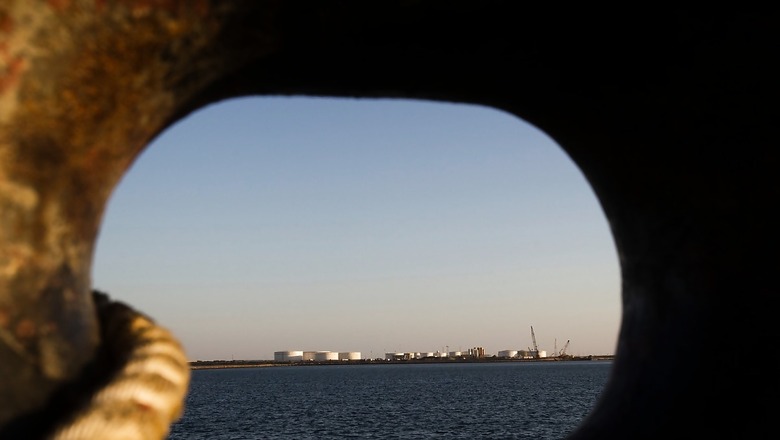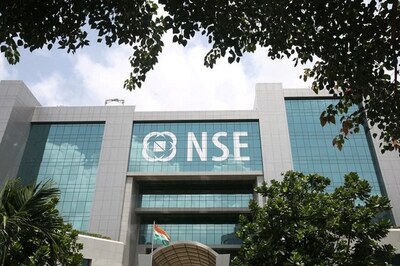
views
External Affairs Minister S Jaishankar said on Monday that India expects to secure a “long-term arrangement” with Iran regarding the management of the strategically important Chabahar port. His remarks came as Union Shipping Minister Sarbananda Sonowal took flight to the West Asian country to seal the deal, which is expected to boost Delhi’s investments and connectivity linkages to Tehran.
“My understanding is that my Cabinet colleague Sarbananda Sonowal is going to Iran today and it is expected that we would see a long-term agreement between India and Iran,” the minister told reporters during an event in Mumbai. “The expectation is that we will see more investments and connectivity linkages from that part of the port. It’s definitely heading in a good direction,” he added.
For India, Chabahar port is an optimally located node for accessing Afghanistan, Central Asia, the Caucasus and Eurasian markets. West Asian experts argue that Chabahar is a linchpin in India’s quest for regional connectivity, economic growth, and geopolitical influence. Despite challenges posed by US sanctions and infrastructural constraints, India, under the Narendra Modi government, remained steadfast in its commitment to harnessing Chabahar’s potential.
Here are five reasons why the Chabahar port holds strategic importance for India:
#WATCH | Mumbai | On signing of an agreement on managing Chabahar Port, External Affairs Minister & BJP leader Dr S Jaishankar says, “On Chabahar Port agreement my understanding is that my Cabinet colleague Sarbananda Sonowal is going to Iran today and it is expected that we… pic.twitter.com/55Eccya3Cy— ANI (@ANI) May 13, 2024
1. Geopolitical Diversification
Amid regional tensions and geopolitical rivalries in the Middle East, Chabahar offers India a crucial alternative route for trade and connectivity. By bypassing Pakistan’s ports, particularly Karachi and Gwadar, India aims to reduce its dependency on traditional routes vulnerable to political disruptions. This diversification strategy aligns with the country’s broader foreign policy objectives of strengthening ties with energy-rich Central Asian countries.
2. Access to Afghanistan
Before the Taliban arrived in August 2021, India worked hard to increase engagement with Afghanistan significantly over the years, encompassing development aid, infrastructure projects, and strategic partnerships. The key Iranian port serves as a lifeline for delivering humanitarian assistance, reconstruction efforts, and trade supplies to Afghanistan. Through Chabahar, India can circumvent logistical challenges posed by landlocked Afghanistan’s limited access to seaports, fostering economic integration and stability in the war-torn nation.
3. Gateway to Central Asia
Positioned at the crossroads of South Asia, Central Asia, and the Middle East, Chabahar holds immense potential as a transit hub for facilitating trade between India and resource-rich Central Asian countries. In the past, India’s participation in initiatives like the India-Iran-Afghanistan trilateral agreement and the International North-South Transport Corridor underlined its strategic intent to capitalize on Chabahar’s strategic location. Enhanced connectivity through Chabahar opens up lucrative markets for Indian goods and strengthens regional economic cooperation.
4. Energy Security
Iran holds significant reserves of oil and natural gas, making it a crucial partner for India’s energy security. Chabahar provides India with a strategic foothold in Iran’s energy-rich region, enabling smoother access to Iranian resources while bypassing maritime chokepoints like the Strait of Hormuz. Amidst evolving geopolitical dynamics and uncertainties in the global energy market, Chabahar enhances India’s resilience by diversifying its energy sources and supply routes.
4. Counterbalancing China
As China expands its footprint across South Asia through its Belt and Road Initiative (BRI), India seeks to counterbalance Chinese influence by bolstering its own connectivity projects, including Chabahar. By investing in Chabahar’s development, India aims to offer an alternative model of infrastructure development that prioritises transparency, sustainability, and respect for sovereignty. This strategic calculus resonates with India’s vision of promoting a free, open, and rules-based Indo-Pacific region, where smaller nations have agency and autonomy.
Brief History Of Chabahar Port
It was the year 1973, when Iran inaugurated the Chabahar port, marking its strategic significance on the southeastern coast near the Gulf of Oman. Three decades later, India in 2003 expressed its initial interest in developing the port to bolster connectivity and trade with Afghanistan and Central Asia. This interest materialised in 2008 when India and Iran signed a Memorandum of Understanding for Chabahar and the development of a transit corridor. By 2012, India committed $100 million to kickstart Chabahar’s infrastructure development.
A key moment came in May 2016 when India, Iran, and Afghanistan inked the Trilateral Agreement, solidifying Chabahar’s role as an International Transport and Transit Corridor. This laid the groundwork for India to take over operations of the Shaheed Behesti port in December 2016, heralding a new phase in Chabahar’s development.
In October 2017, India dispatched its maiden wheat shipment to Afghanistan through Chabahar, marking a significant stride towards operationalizing the port as a key trade route. The following year, Iran granted India’s Ports Global Limited operational control over the first phase of Chabahar port, a move that underscored India’s growing involvement.
By 2019, the United States exempted Chabahar port from its sanctions on Iran, recognising its pivotal role in facilitating Afghanistan’s reconstruction efforts. Despite challenges posed by US sanctions over Iran’s nuclear programme and the Covid-19 pandemic in 2020, India remained steadfast in its commitment to Chabahar’s development, emphasizing its importance for regional connectivity and trade. In 2022, India announced intentions to secure a long-term arrangement with Iran for Chabahar’s management.
Last August, India’s ambassador to Iran, Rudra Gaurav Shresth underlined India’s full commitment to realising this connectivity vision and dismissed “certain vested interests try to spread propaganda questioning India’s commitment towards Chabahar port.” “These interests perhaps do not wish to see Iran and India collaborate on a strategic regional initiative. I would like to once again reiterate that India fully supports the vision of Chabahar as a strategically important connectivity hub in the region. Realising this vision needs joint efforts by all relevant stakeholders,” he said in an interview with the Iranian Daily.




















Comments
0 comment